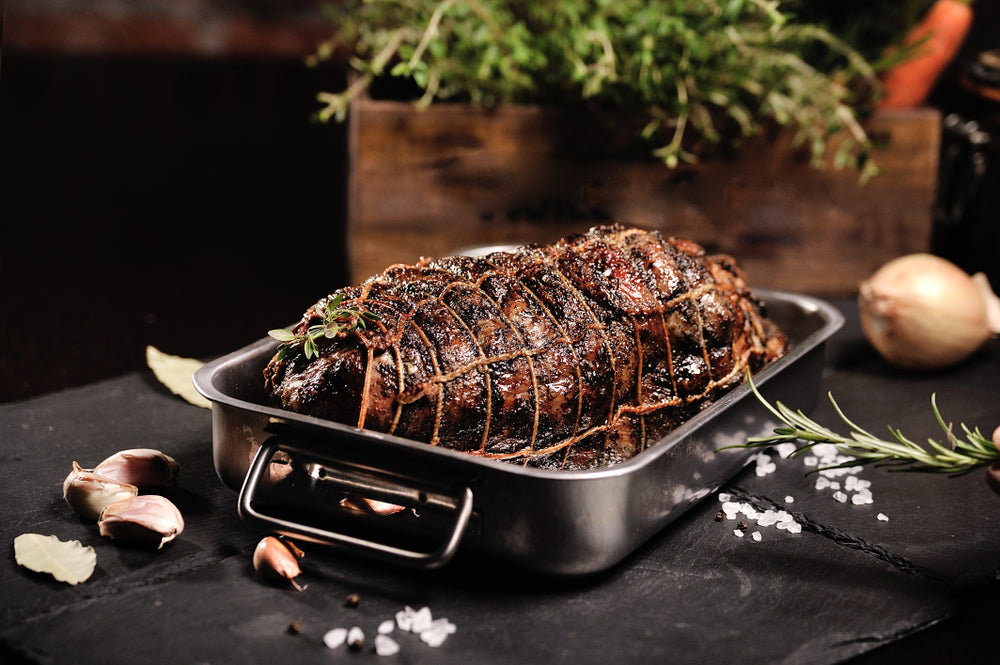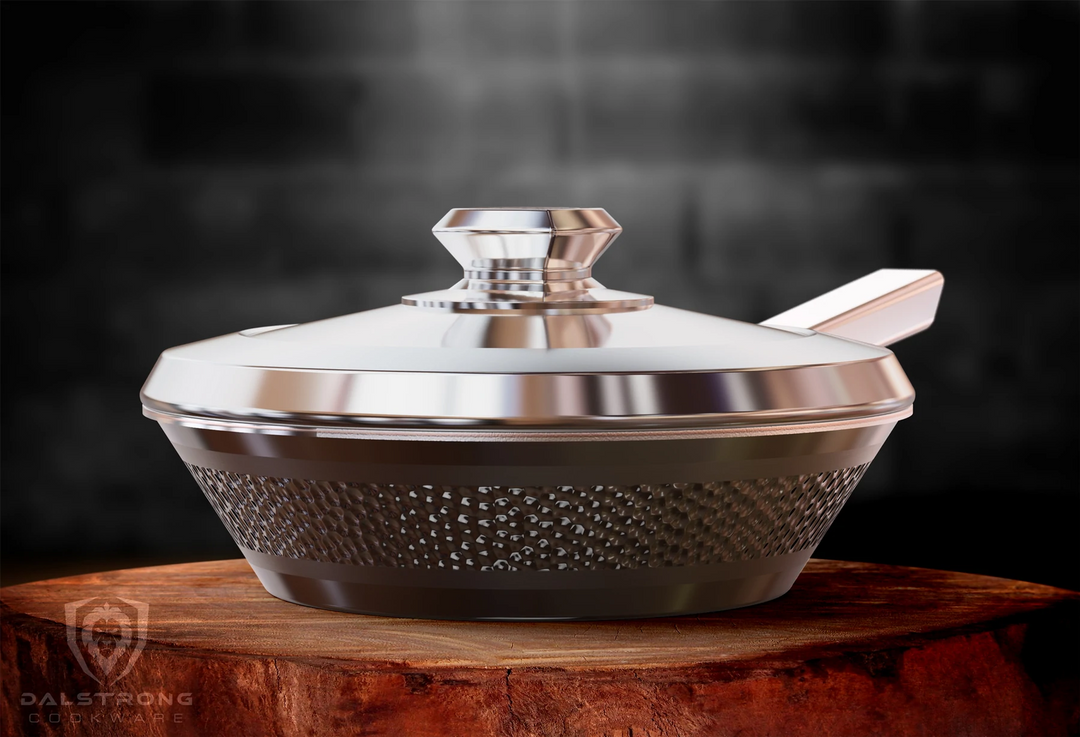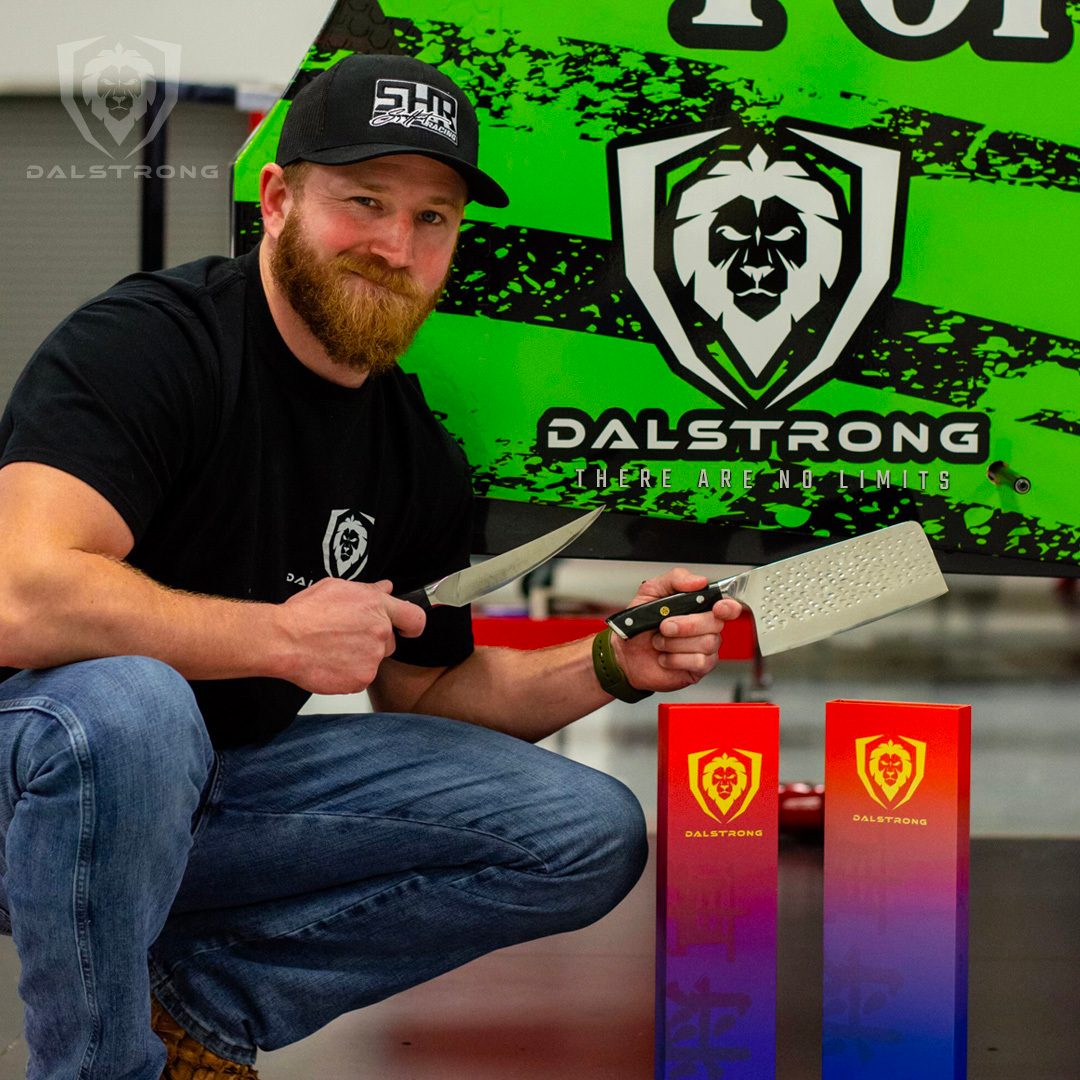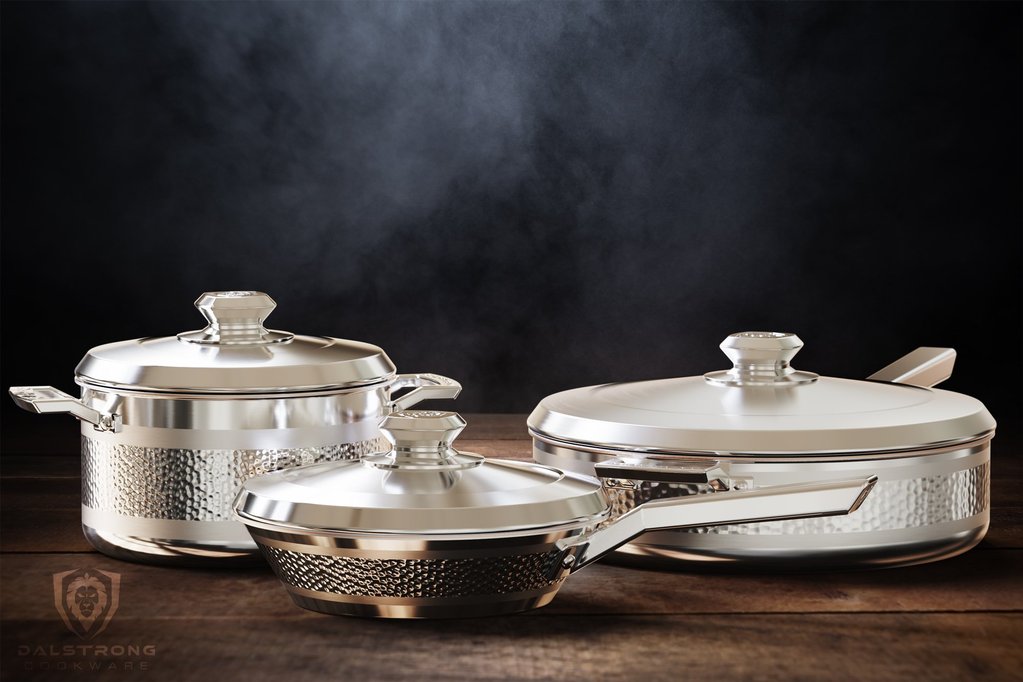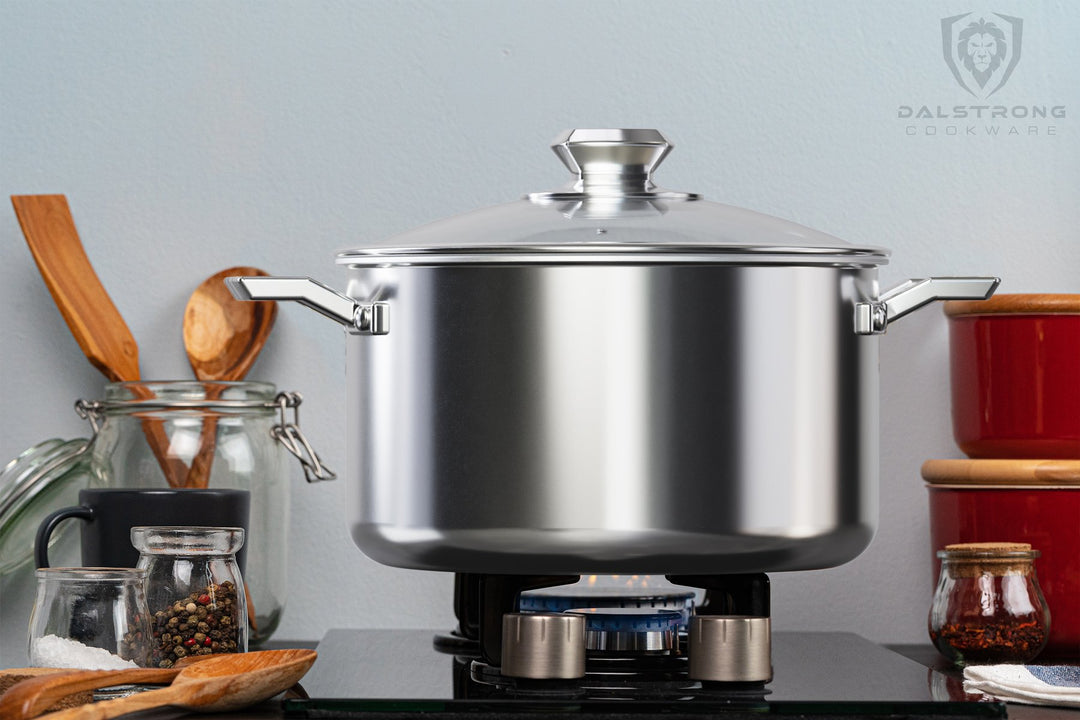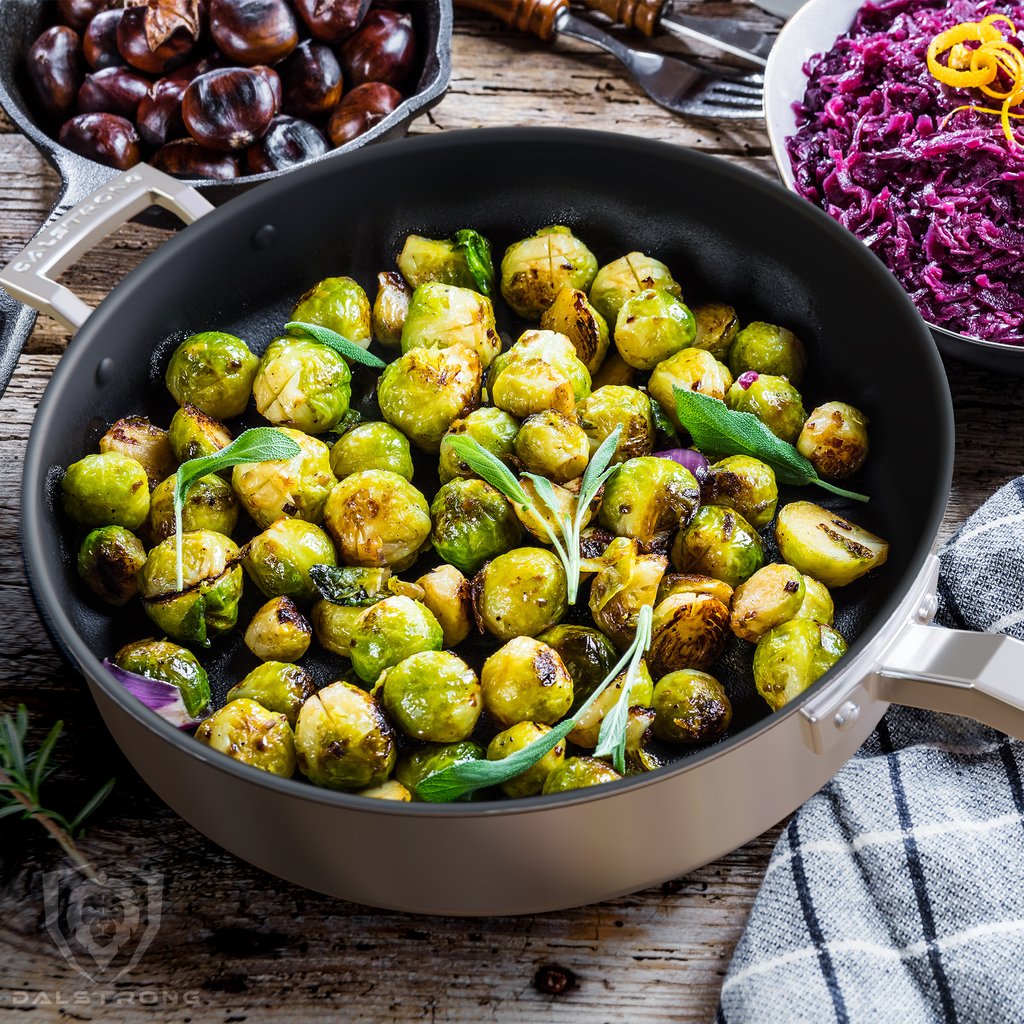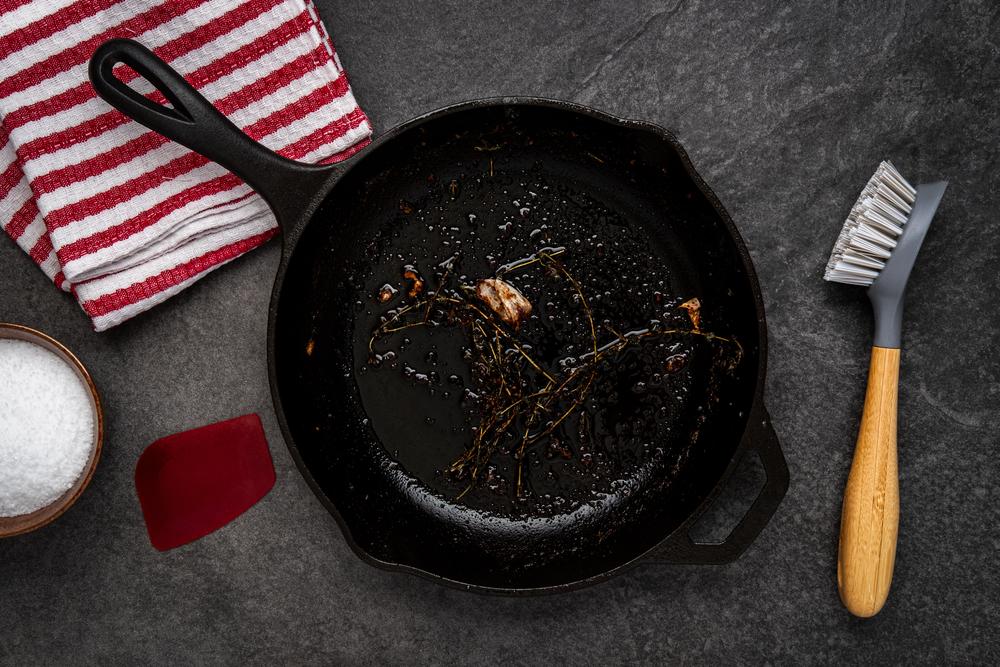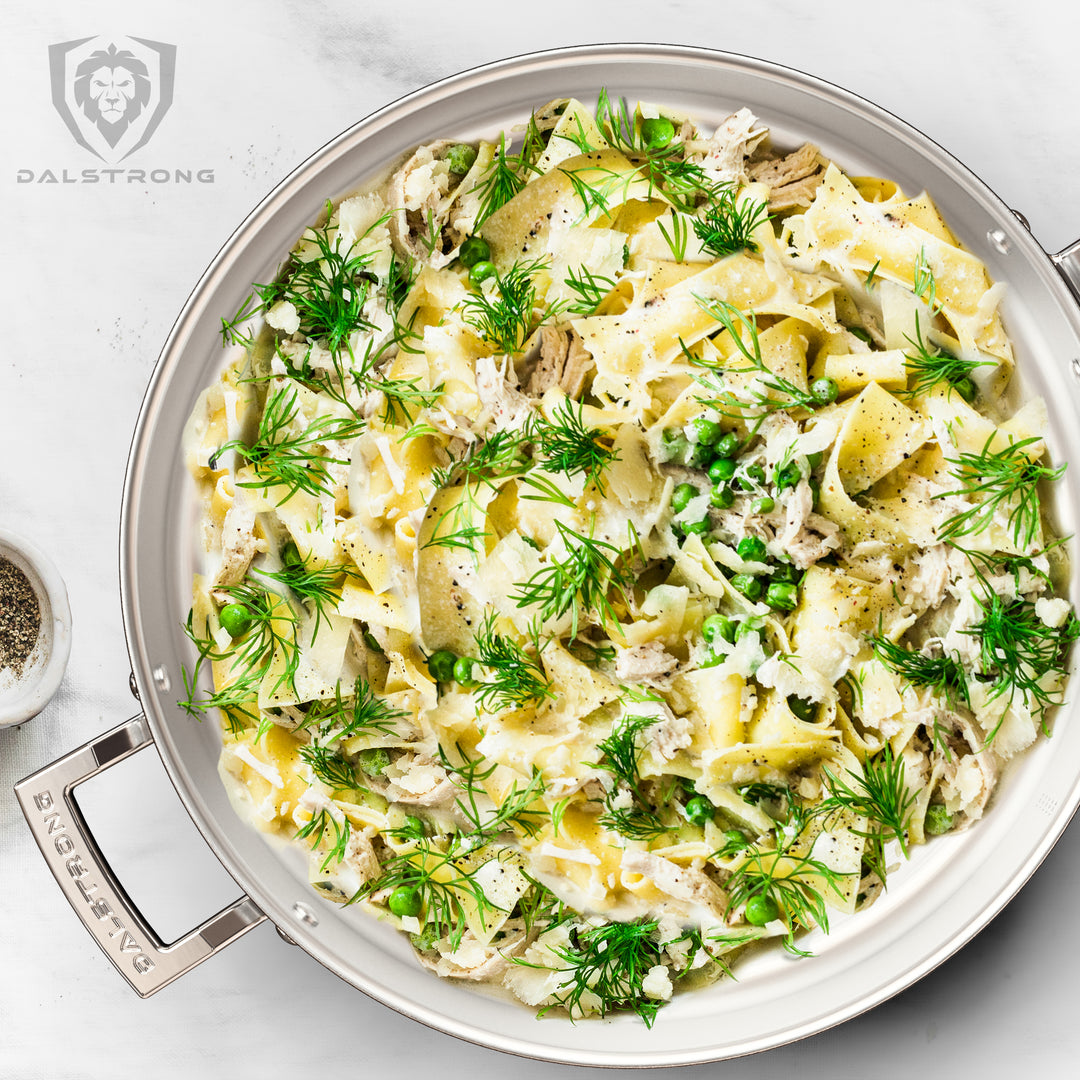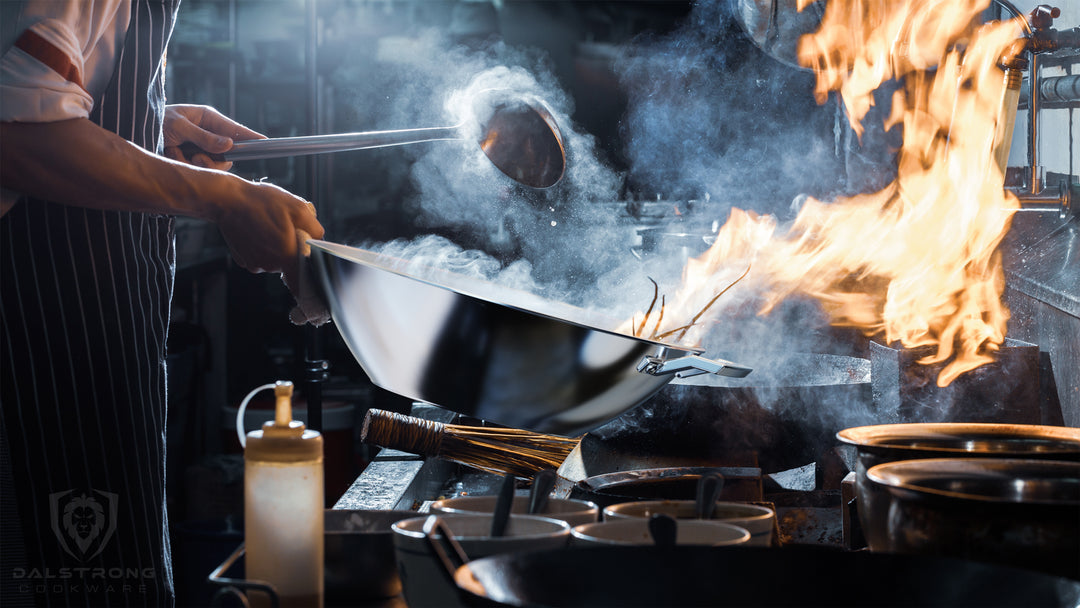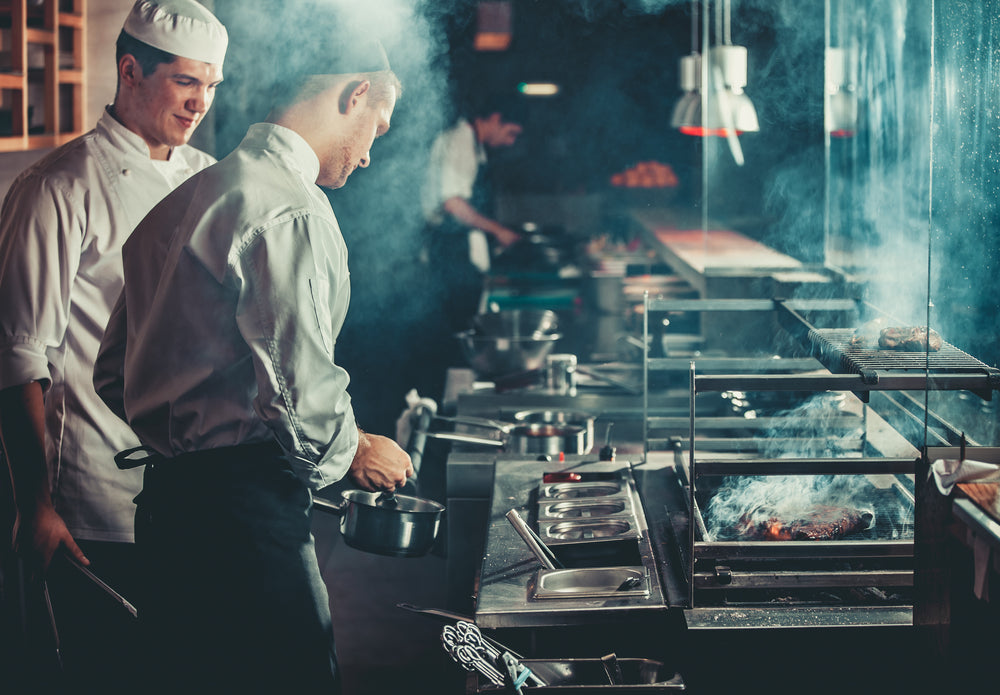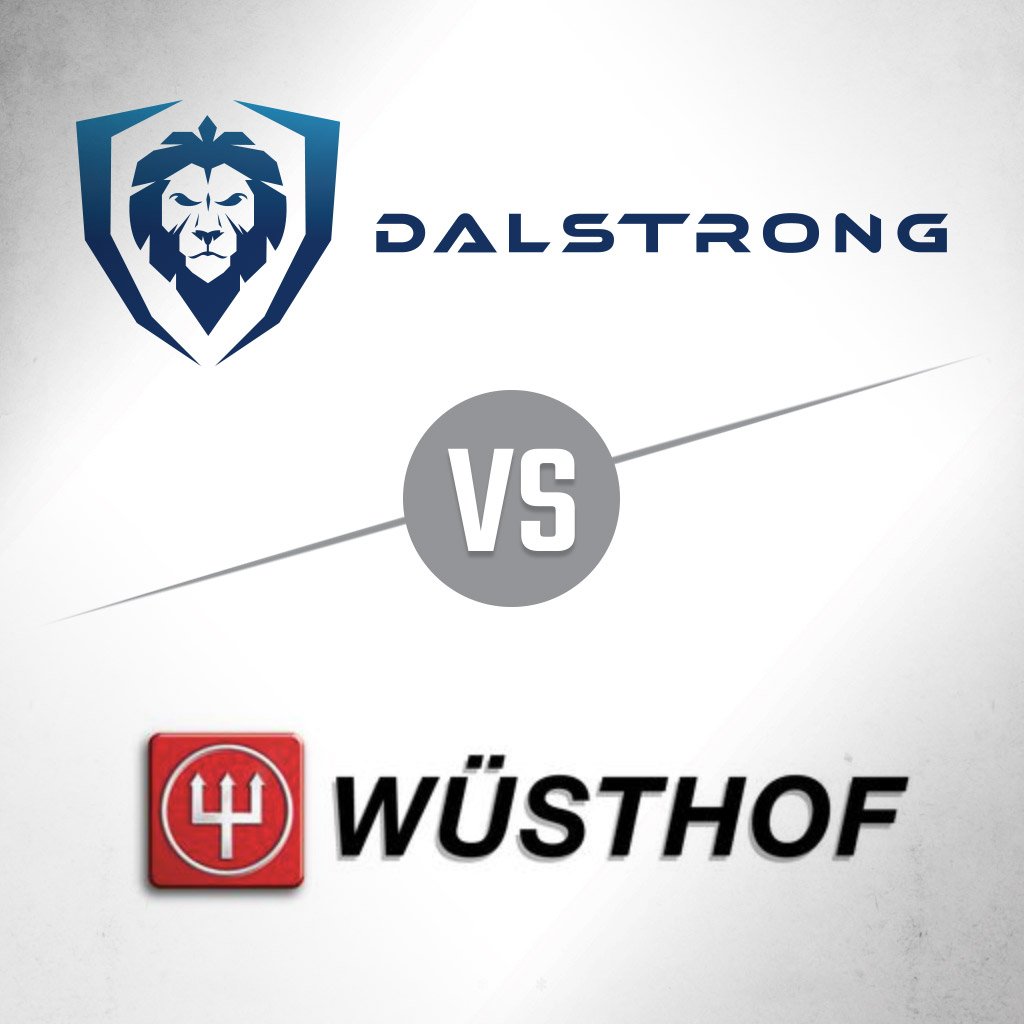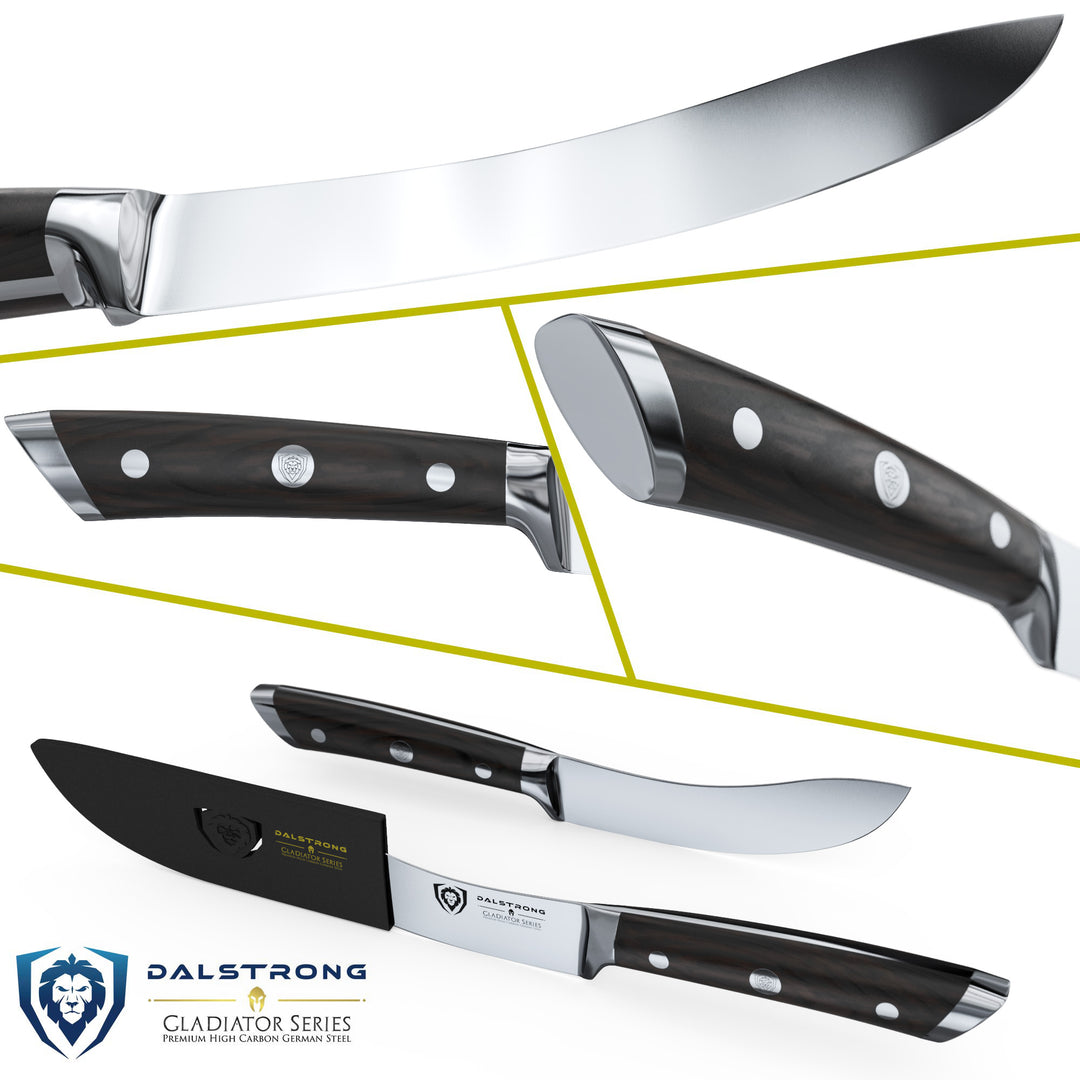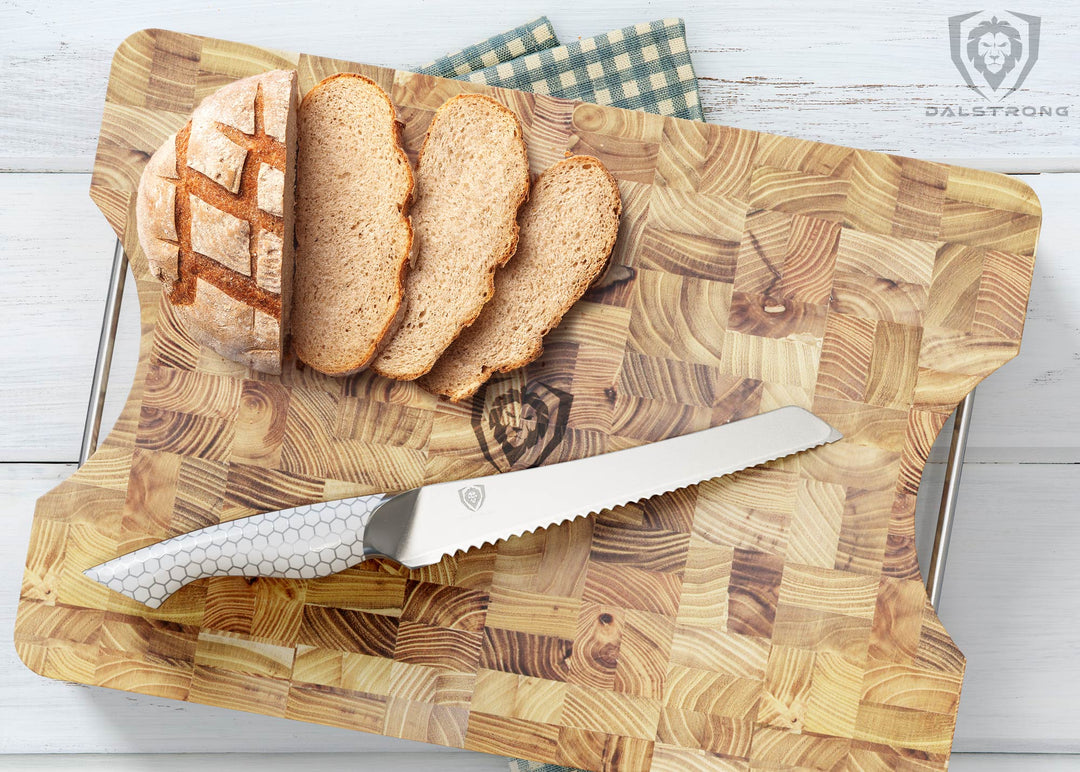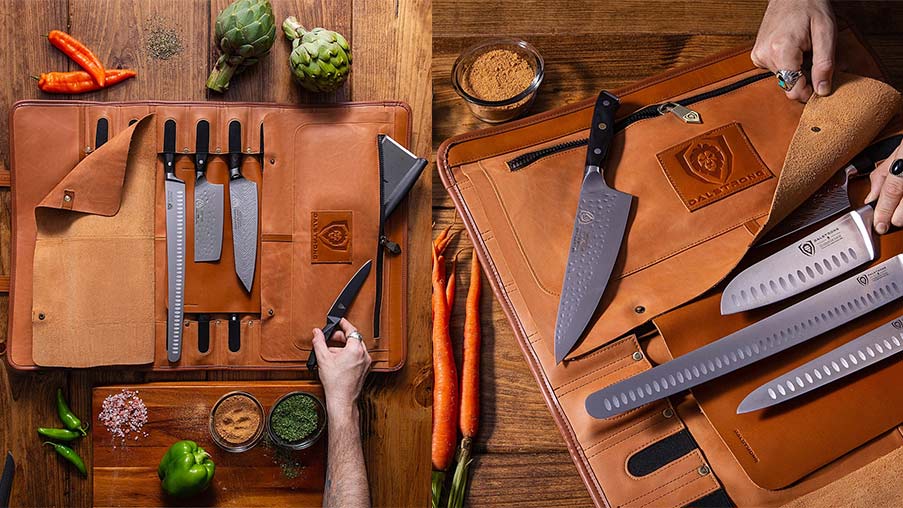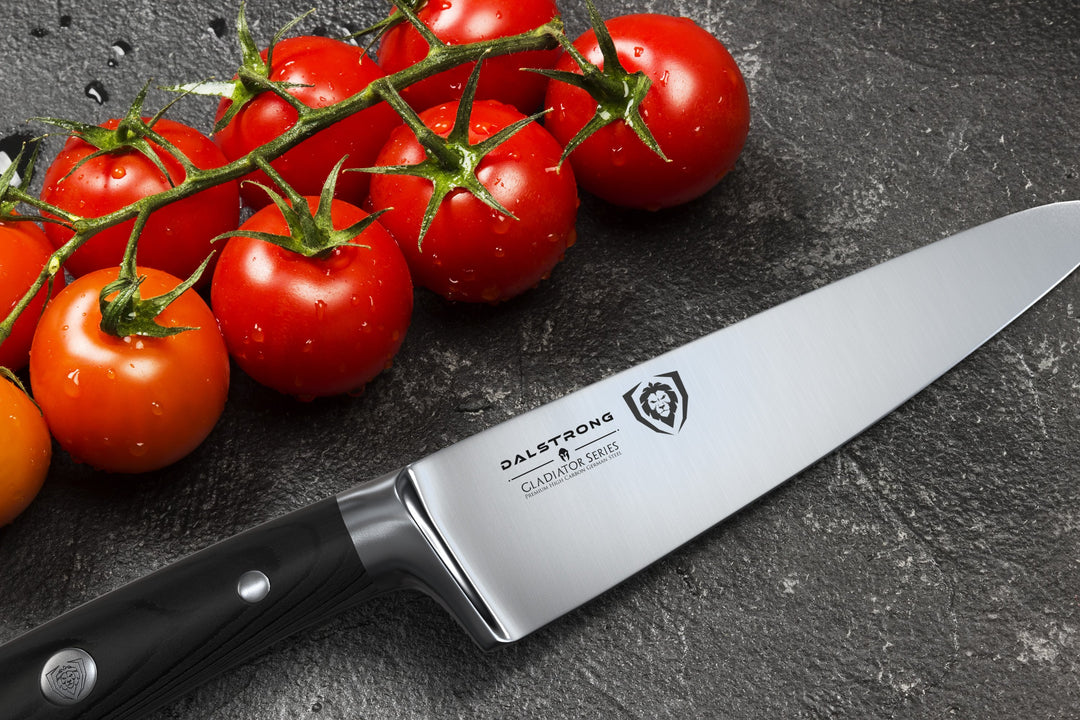5 Things You Need To Know About Ceramic Knives
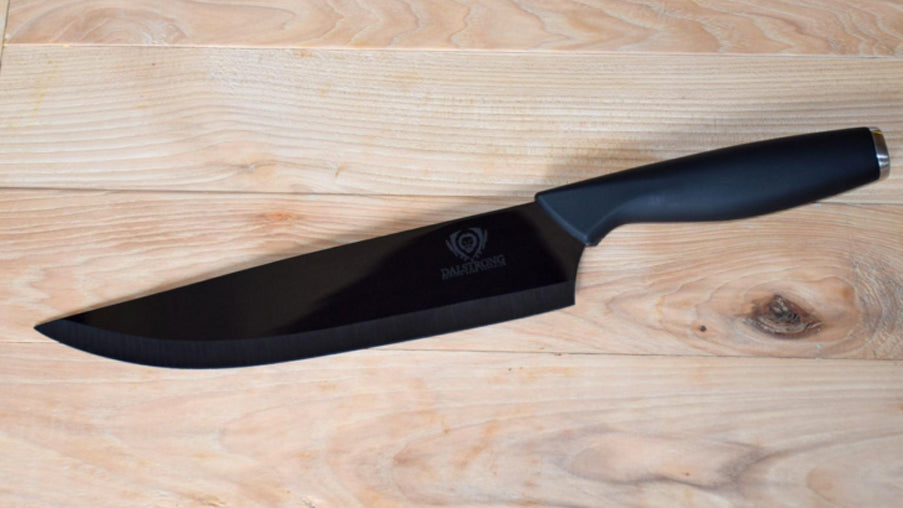
As a professional chef, little else can be as frustrating as kitchen knives that hinder rather than enhance your craft. At Dalstrong, we understand this. And that’s why we believe that the best chefs deserve only the best knives in order to cook up only the best dishes.
Steel knives are trusted by many and depended upon by all who seek to deliver nothing but exceptional culinary experiences - both in commercial and home kitchens.
Nevertheless, ceramic knives have seen interest in recent times, with some claiming them to be a suitable alternative. But are they, really?
Could both a ceramic and steel knife blade have similar capabilities? Will the latter edge out the former from its pinnacle position?
It’s unlikely if the following reasons are anything to go by.
1. Ceramic Knives Are Made of a Problematic Material

Ceramic knives are made of ceramic, and that’s a problem.
We know ceramic to be a typically fragile material. It’s therefore unsurprising that knives made from it have a certain brittleness to them.
Granted, the ceramic used for knife blades isn’t the same you find on mugs and the like. It’s a special kind of ceramic called zirconium oxide. It’s also referred to as ‘advanced ceramic”. That’s another way of saying it’s harder than almost any other substance and material save from diamonds.
That sounds like a positive attribute, when in fact, it isn’t. These kitchen knives have proven to be too brittle to handle the demands of a professional kitchen environment. And, the more carbon a blade has, the more brittle it will be.
This becomes more pronounced when compared to a metal blade.
2. You’ll Have a Hard Time Sharpening Ceramic Knives

Let’s put it bluntly; ceramic knives are an absolute pain to sharpen.
Like steel knives, they’re razor-sharp out the box. They also tend to stay sharper than metal kitchen knives.
However, as with all blades there comes a time when they lose their precision as they yield to bluntness.
And when that time comes, a ceramic blade can only be sharpened using a diamond sharpener. This is an extremely difficult process as it’s hard to evenly sharpen such blades. The brittle nature of ceramic works against it here, increasing the possibility of damaging the blade during the sharpening process.
And it gets worse.
Some ceramic knife makers include a voucher in the packaging. This can be redeemed by sending the knife back to the manufacturer who then handles the sharpening.
But what may come off as value addition is no more than a gimmick. You’d have to incur shipping costs and still have to wait for the sharpened knife to find its way back to you. This would necessitate having more than one set of ceramic knives, considering the demands of a professional kitchen.
Needless to say, all of this is an inconvenience those who are dedicated to their craft could do without.
3. Ceramic Knives Don’t Fare Well as Far as Ease of Use Goes

“[Ceramic knives] may seem so easy to use at first, but when you work with a lot of vegetables, eventually your hand and arm will end up doing most of the work...”
Cara Mangini, author - The Vegetable Butcher
Ceramic knives are most certainly razor-sharp right out the box and retain their sharpness. That much isn’t up for debate. The issue arises when they not only cut through your vegetables and fruit but also your cutting board.
One could argue that any seasoned chef has mastered the art of handling their knives. And that using the right pressure to cut through ingredients depending on the job at hand could fix this.
That’s not the case when it comes to working with a ceramic knife. Ceramic knife usability is hampered by the blade’s inability to move smoothly along a cutting board. And the more attempts you make at applying minimal pressure, the more difficult it is to use the knife.
When compared to a metal blade, a ceramic one just can’t deliver much of a seamless experience.
4. Ceramic Knives Are Far From Versatile

“A ceramic knife should not and will not replace a chef’s knife,”
Taylor Erkkinen, co-founder - Brooklyn Kitchen
A ceramic knife set is best suited for cutting fruits and vegetables as well as boneless meat. Such ingredients are tender enough not to damage the blade. When it comes to a professional kitchen or that of a discerning home chef, they just won’t do.
This demonstrates the limitations that come with acquiring ceramic knives sets.
You need tools that can withstand the heat and keep up with your distinctive style and dynamic needs. The high quality, handcrafted Dalstrong range of steel knives can do that for you in a way no ceramic knife can. No matter how hard it tries.
5. Ceramic Knives Are Notorious for Chipping

“Although they have a sharper edge and hold that edge, I've never found them in a professional kitchen for the following reason — they chip very easily and cannot be fixed like the more traditional steel or carbon blades,”
David Mawhinney, Culinary Director - Haven's Kitchen
One more thing to know about ceramic knives is how easily they chip. As earlier mentioned, they’re brittle. Furthermore, even with the utmost care and expertise, the chipping of a ceramic knife is inevitable.
While it’s unlikely that ceramic can cause poisoning as it isn’t toxic, it still poses a high level of risk. When blades chip off of ceramic knives, the fragments can easily get cooked along with the dish.
To compound this already unsavory matter further, chipped ceramic knives need to be discarded as they are no longer fit for use. As such, one would run through a ceramic knives set quite fast.
Though these knives may stay sharp longer, you’d discard them sooner than the more reliable metal knives.
Dalstrong Steel Knives: A Cut Above the Rest
The points raised above underscore why steel knives have achieved their status. But even then not all steel knives are made equal.
At Dalstrong our knives are set apart by their agility and exquisite craftsmanship. We don’t merely make knives. We create workhorses that work as hard and as well as you do.
Whatever the occasion, you can rely on the brutal effectiveness with which they complement your style. Furthermore, our use of premium materials from around the world ensures that our steel blades stay sharper for longer.
Our razor-sharp Dalstrong kitchen knives each have outstanding attributes that speak for themselves.
We offer an extensive range of high-quality knives to suit just about any need
Quantum Series

Quantum 1 Series 8.5" Chef Knife
The Quantum Series is painstakingly handcrafted and meticulously engineered. Every Quantum Series knife features a carefully designed blade made from premium high-carbon steel. The blade is nitrogen-cooled, vacuum, and heat-treated helping it stay sharp for long.
The handle is hybrid, ultra-robust as well as near impervious to heat, cold, and moisture. You can count on it to last a lifetime.
Phantom Series
Boasting handcrafted Japanese AUS-8 steel, the Phantom series is deadly effective. It’s no wonder the blade is engraved with the Japanese kanji for “ghost.”
Each Phantom series steel blade is handcrafted using the traditional honzabuke method. This makes the edge a razor-sharp 13-15 degrees for swift, effortless cuts.
For the handle, we use premium laminated pakkawood imported from Spain. Our Phantom series handle, therefore, offers superior strength, refinement, and beauty. The handle also features a sanitary build ideal for busy kitchens
Shogun Series
One of our best sellers, the Shogun Series reigns supreme. Wielding knives from this range can only be compared to wielding a lion’s power.
The blade is precision-forged from a single piece of 66-layered Damascus high-carbon stainless steel cladding. At the core, is ultra-premium Japanese AUS-10V steel. The blade also reduces drag, preventing it from sticking on food.
From the tsuchime finish to the ergonomic handle, nothing is spared so as to deliver an unparalleled experience. Truly, this is the epitome of elegance, craftsmanship, design, and functionality.
You can explore our range and make comparisons to find the most suitable knives for you.
Whichever series you choose, you’ll have a wonderful selection of;
- Chef's Knife
- Paring Knife
- Steak Knife
- Slicing & Carving Knife
- Boning & Fillet Knife
- Cleaver Knife
- Butcher's Knife
- Bread Knife
Have a question? Need knife suggestions? Want to tell us about your Dalstrong experiences?
The only thing we love more than crafting knives that exceed expectations hearing from you. Drop us a line and we will get back to you as soon as possible. Simply click here.
Choose Dalstrong and discover why more than 250,000 chefs have switched to our range.
You can also check in with our Expert Knife Finder Quiz and get specific recommendations based on your needs.
Frequently Asked Question
What are the benefits of a ceramic knife?
A ceramic knife offers several benefits, such as exceptional sharpness and long-lasting edge retention. They're also lightweight and easy to handle, reducing hand fatigue during prolonged use. Ceramic knives are resistant to staining and corrosion, ensuring they remain hygienic. While they can be brittle and require careful handling, a well-maintained ceramic chef's knife or a ceramic-coated knife set can be a valuable addition to any kitchen.
Are ceramic blades worth it?
Ceramic blades can be worth it depending on your specific needs. They offer unique advantages like exceptional sharpness and resistance to staining. However, they are brittle and can chip or break if not handled carefully. For slicing and precision tasks, such as with a utility knife, they can be valuable. Still, for heavy-duty chopping, a steel knife may be more suitable. Consider your cooking habits and preferences when deciding on ceramic knife sets.
Are ceramic knives good for cutting?
Ceramic knives excel at cutting tasks that require precision and sharpness. They are exceptionally sharp and maintain their edge for a long time, making them ideal for slicing and dicing fruits, vegetables, and boneless meats. However, they are brittle and can chip or break if used on hard or frozen foods or if dropped. Careful handling is essential for their longevity and effectiveness in cutting.
Do chefs use ceramic knives?
Chefs do use ceramic knives, especially for specific tasks like slicing fruits, vegetables, and boneless proteins. Ceramic knives are known for their sharpness and precision. However, they are not typically the primary choice in professional kitchens for all-purpose use due to their brittleness and limited suitability for heavy-duty tasks. Many chefs prefer high-quality steel knives for versatility and durability in a commercial kitchen environment.
Can I sharpen a ceramic knife?
Sharpening a ceramic knife can be challenging because ceramic is harder than most sharpening stones. It's best to leave this task to professionals who specialize in ceramic knife sharpening. They use diamond wheels or specialized equipment to restore the blade's edge. Attempting to sharpen a ceramic knife at home with regular sharpening tools may result in damage to the knife or injury if not done correctly.
How long do ceramic knives last?
The lifespan of a ceramic knife largely depends on its usage and maintenance. With proper care and careful use, a high-quality ceramic knife can last for many years, potentially a decade or more. Regular sharpening by a professional can extend its lifespan. However, they can chip or break if subjected to heavy or improper use, so careful handling is essential to maximize their longevity.



















































































































































































































































































































































































































